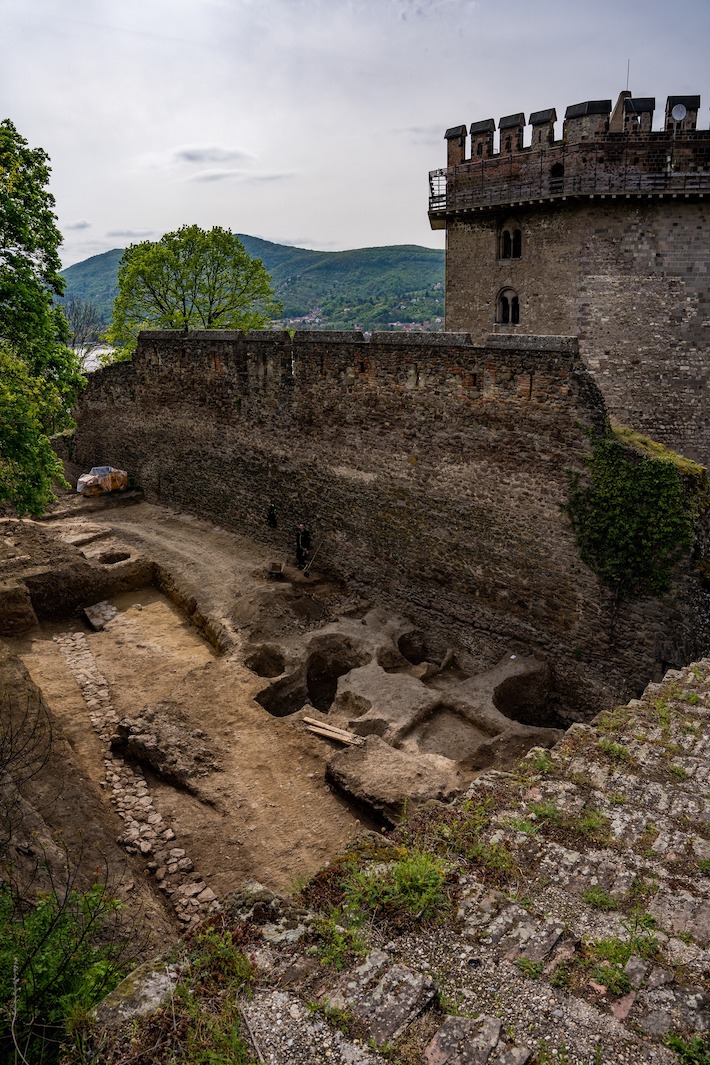 VISEGRÁD, HUNGARY—Hungary Today reports that traces of a fifteenth-century Christian church have been found in Visegrád, the site of a fortified medieval castle on a hill on the Danube River in northern Hungary. The Church of the Virgin Mary had been part of a Franciscan monastery founded by Sigismund of Luxembourg, and built next to his palace. Sigismund, the son of Charles IV, ruled as King of Germany, Bohemia, Hungary, and Croatia, and eventually as Holy Roman Emperor from 1433 until his death in 1437. Excavation of the area in front of the church’s high altar uncovered the remains of three people in the debris of a collapsed crypt. A spur, several lead pellets, and a copper bowl that appears to have been battered by weapons suggest that the three may have been soldiers, who perhaps attempted to defend the site. The building is thought to have collapsed in the sixteenth century, after Visegrád was captured by the Ottomans. Traces of a settlement dated to the Ottoman occupation, including coins, an Ottoman cemetery, and an oval-shaped oven, were also uncovered in the lower, fortified area of Visegrád. To read about Hungary's ancient history, go to "Head Space."
VISEGRÁD, HUNGARY—Hungary Today reports that traces of a fifteenth-century Christian church have been found in Visegrád, the site of a fortified medieval castle on a hill on the Danube River in northern Hungary. The Church of the Virgin Mary had been part of a Franciscan monastery founded by Sigismund of Luxembourg, and built next to his palace. Sigismund, the son of Charles IV, ruled as King of Germany, Bohemia, Hungary, and Croatia, and eventually as Holy Roman Emperor from 1433 until his death in 1437. Excavation of the area in front of the church’s high altar uncovered the remains of three people in the debris of a collapsed crypt. A spur, several lead pellets, and a copper bowl that appears to have been battered by weapons suggest that the three may have been soldiers, who perhaps attempted to defend the site. The building is thought to have collapsed in the sixteenth century, after Visegrád was captured by the Ottomans. Traces of a settlement dated to the Ottoman occupation, including coins, an Ottoman cemetery, and an oval-shaped oven, were also uncovered in the lower, fortified area of Visegrád. To read about Hungary's ancient history, go to "Head Space."
Traces of a Royal Medieval Church Found in Hungary
